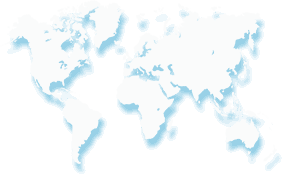Complete elimination of bacteria in high purity water systems, while highly desirable, is all but impossible given technologies available today. At best, it can be reduced, and its proliferation minimized. Disinfectants such as ozone or chlorine, while highly effective, cannot be tolerated in high purity water treatment other than as part of periodic cleaning and disinfection regimens.
Exposing bacteria to light of wavelengths around 200-300 nanometers in the UV spectrum reduces bacterial proliferation by altering cellular physiology in a manner that minimizes or prevents cellular reproduction.
How do UV treatment systems work?
Ultraviolet light can be found on the electromagnetic spectrum somewhere between visible light and x-rays and can be used to kill microorganisms present in water, such as bacteria. All living organisms contain DNA, a nucleic acid that contains the genetic instructions used in the development and functioning of living organisms. The main role of DNA is the long-term storage of information and DNA is often compared to a set of blueprints, since it contains the instructions needed to construct other components of cells such as proteins and RNA. The DNA segments that carry this genetic information are called genes, but other DNA sequences have structural purposes, or are involved in regulating the use of this genetic information.
Ribonucleic Acid (RNA), present in cell nuclei, plays several important roles in the processes that translate genetic information from deoxyribonucleic acid into protein products. An important aspect of this role is in cellular reproduction. In order for UV treatment systems to work, the UV rays need to be able to penetrate and pass through the bodies of the microorganisms in the water. Exposure to the UV light alters the microorganisms’ DNA, preventing it from being able to reproduce, while also ensuring that the water is not altered on a chemical basis.
When organisms are subjected to UV light of sufficient dosage in the range of 200-300 nm, DNA and RNA molecules absorb the UV. The absorption of UV radiation at 254nm causes the formation of dimers along the DNA strands. Dimers are A_A (adenine – adenine), GG (guanine -guanine), T-T (thymine-thymine) compounds as opposed to the normal formation of A-T-G-C- etc. The net effect is disruption of the RNA nucleic material so as to prevent cellular replication. So, while bacteria are not typically killed outright, the failure to replicate prevents proliferation.
Dosage is a function of wavelength, intensity, and time of exposure. If the dosage is not optimized, then complete inhibition of replication WILL NOT occur. An insufficient UV dosage may cause limited damage to the DNA which can, under favorable conditions, repair itself using repair enzymes. At wavelengths and intensities typically used for disinfection, UV water treatment systems do not remove organics that have been dissolved in the water, and the effectiveness of ultraviolet disinfection depends on the dosage, which is a function of lamp intensity and length of exposure to the light.
Ultraviolet disinfection systems typically utilize thin cylindrical bulbs capable of generating narrow band wavelength UV light in the 254 nm range, placed in close proximity to high-purity glass tubes through which the water flows. The unit must be sized to provide adequate dosage at the specified flowrate. The water to be treated must be sufficiently free of turbidity (sediment), iron, manganese and any colorant that could affect transmission of the 254 nm UV light. Manufacturers’ specifications should be consulted.
Many design and service considerations come to bear, including pretreatment of the water upstream of the UV, sizing the UV system, over-temperature during times of no flow, UV intensity monitoring, automatic “scrubbing” of the quartz tube(s), bulb replacement frequency, downstream filtration for removal of inhibited bacteria, UV “traps” on inlet and outlet to prevent UV degradation of connecting piping, and many others. WaterProfessionals® can help specify these ultra-violet sanitization systems and answer questions.
Contact us now to learn more about how a UV disinfection system can help with your high purity water needs.

